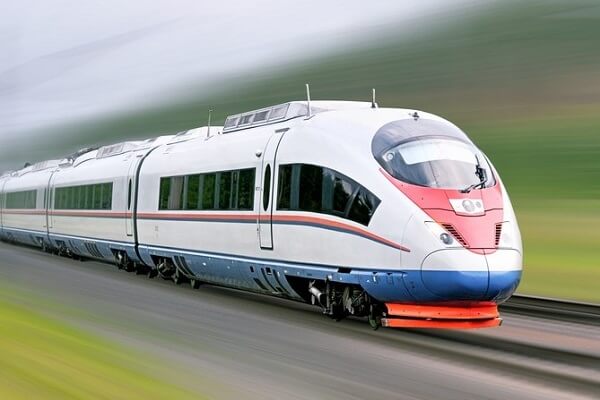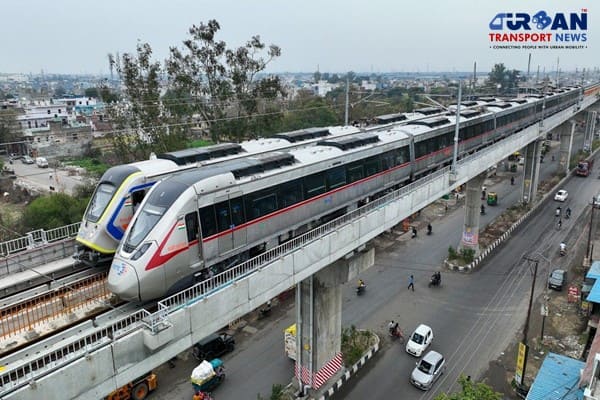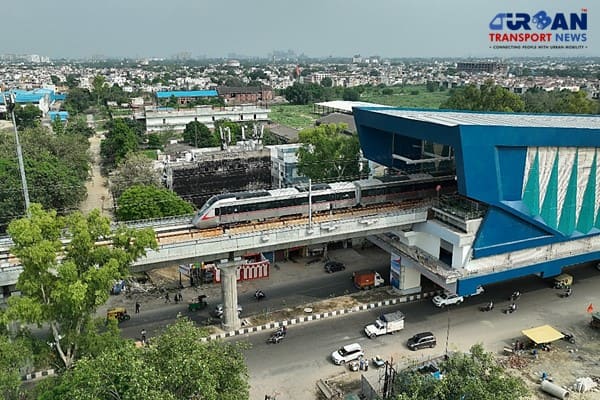 Delhi unveils ambitious Urban Mobility Vision: Luxury Metro Coaches, New Tunnels and Pod Taxi
Delhi unveils ambitious Urban Mobility Vision: Luxury Metro Coaches, New Tunnels and Pod Taxi Qatar approves Saudi Rail Link Agreement, Accelerating Gulf Railway Vision 2030
Qatar approves Saudi Rail Link Agreement, Accelerating Gulf Railway Vision 2030 UP Govt plans to introduce Water Metro services in Ayodhya, Varanasi & Prayagraj
UP Govt plans to introduce Water Metro services in Ayodhya, Varanasi & Prayagraj India’s First Urban Ropeway begins Trial Run in Varanasi, Set to carry 1 Lakh passengers daily
India’s First Urban Ropeway begins Trial Run in Varanasi, Set to carry 1 Lakh passengers daily India and Bhutan to Build First-Ever Rail Link: ₹4,033 Cr Project to Boost Regional Connectivity
India and Bhutan to Build First-Ever Rail Link: ₹4,033 Cr Project to Boost Regional Connectivity Patna to launch Eco-Friendly Water Metro; Trial Run soon between Digha and Kangan Ghats
Patna to launch Eco-Friendly Water Metro; Trial Run soon between Digha and Kangan Ghats Air India Group set to launch Flights Operations from Navi Mumbai International Airport
Air India Group set to launch Flights Operations from Navi Mumbai International Airport Chennai to launch 25-Year Mobility Plan with Unified QR Ticketing and One-App Transit System
Chennai to launch 25-Year Mobility Plan with Unified QR Ticketing and One-App Transit System Kochi Metro bags ₹4.4 crore contract to prepare DPR for Mumbai Water Metro Proejct
Kochi Metro bags ₹4.4 crore contract to prepare DPR for Mumbai Water Metro Proejct Navi Mumbai International Airport set for September launch; IndiGo and Akasa Air to lead Operations
Navi Mumbai International Airport set for September launch; IndiGo and Akasa Air to lead Operations
NCRTC begins work of utility mapping on Delhi-Gurugram-SNB RRTS

New Delhi (Urban Transport News): The National Capital Region Transport Corpoartion (NCRTC) has started the work of mapping the underground utilities on the Delhi-Gurguram-SNB (Shahjahanpur-Neemrana-Behror Urban Complex) RRTS corridor. It will execute the process through a Ground Penetrating Radar (GPR) technology. This information has been shared by the NCRTC today. The underground utility mapping is a process of identifying the position and labelling public utility mains which are located underground.
These mains may include lines for telecommunication, electricity distribution, natural gas, water mains, and wastewater pipes. The GPR method uses radar pulses to detect these utilities. The investigation is being conducted from IDPL Complex, Gurugram and will continue for approximately 40 days. The high-speed Regional Rapid Transit System (RRTS) rail will cover the distance of 106 km from Sarai Kale Khan in Delhi to SNB in approximately 70 minutes. It is a new, dedicated, high-speed, high-capacity, comfortable regional rail-based commuter service connecting regional nodes of NCR to Delhi. This RRTS smart line will pass through the urbanized and industrialized areas of Haryana and connect Delhi airport with the RRTS network, increasing the overall productivity of NCR.
The corridor will strengthen the regional transport infrastructure by providing a fast, safe, comfortable and reliable mobility option to the residents of Delhi, Gurugram, Rewari, Manesar, Daruheda, Bawal and nearby areas. The fast commuting connecting Delhi to nearby regions will be immensely beneficial in decongesting Delhi and its roads, providing citizens the choice to live & work in different regional nodes to lead a better quality of life. Once constructed, the corridor is expected to bring down the travel time between Delhi-SNB to about 70 minutes.
This corridor will not only offer mass transit benefits but also bring in wide range of economic benefits to the society including effectively curbing pollution, improving safety & reliability of commute and creating employment as well as new economic opportunities. Apart from unlocking economic development potential of the region, such high-speed commute will bring people and places closer enabling polycentric growth in NCR.







